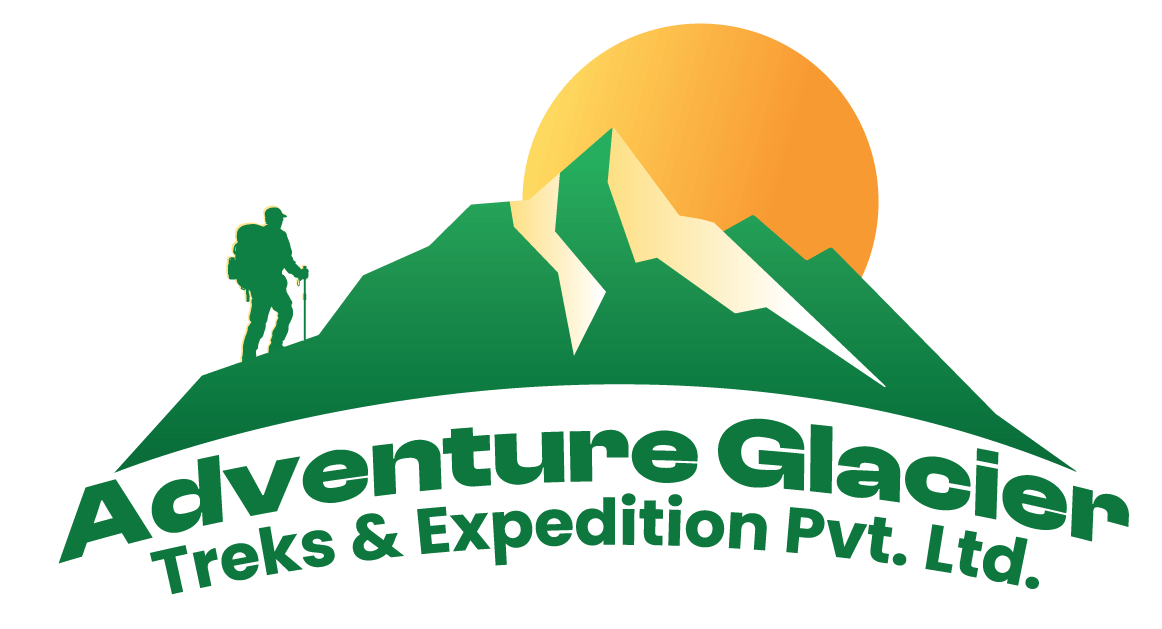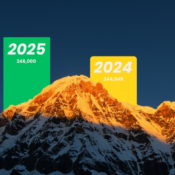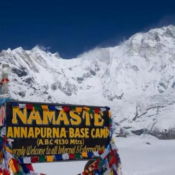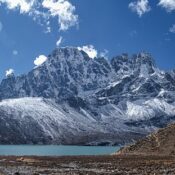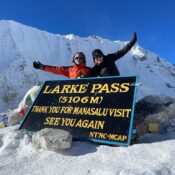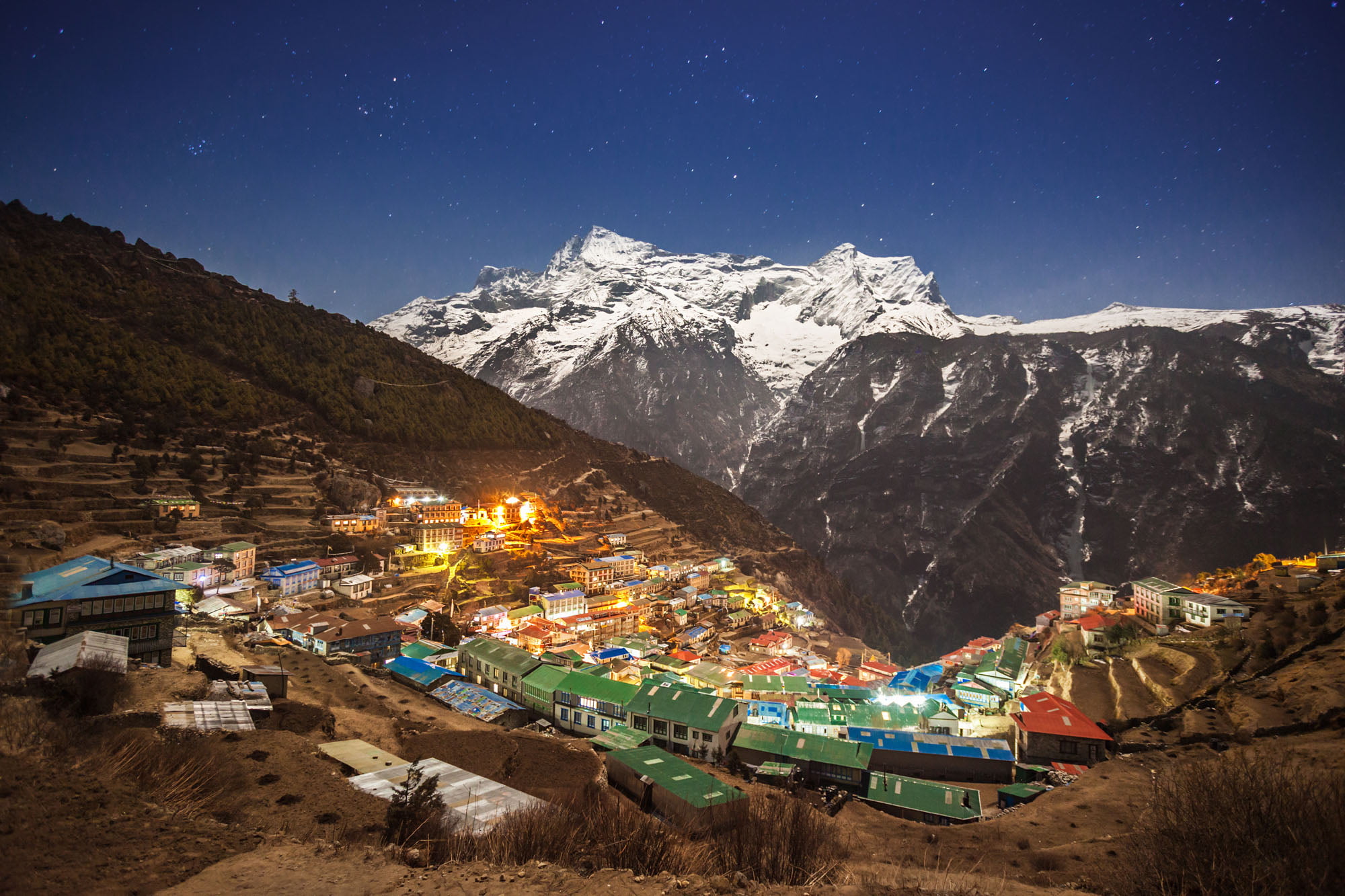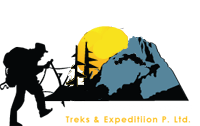Detailed Guide to the Cost of Annapurna Circuit Trek in Nepal (2026)
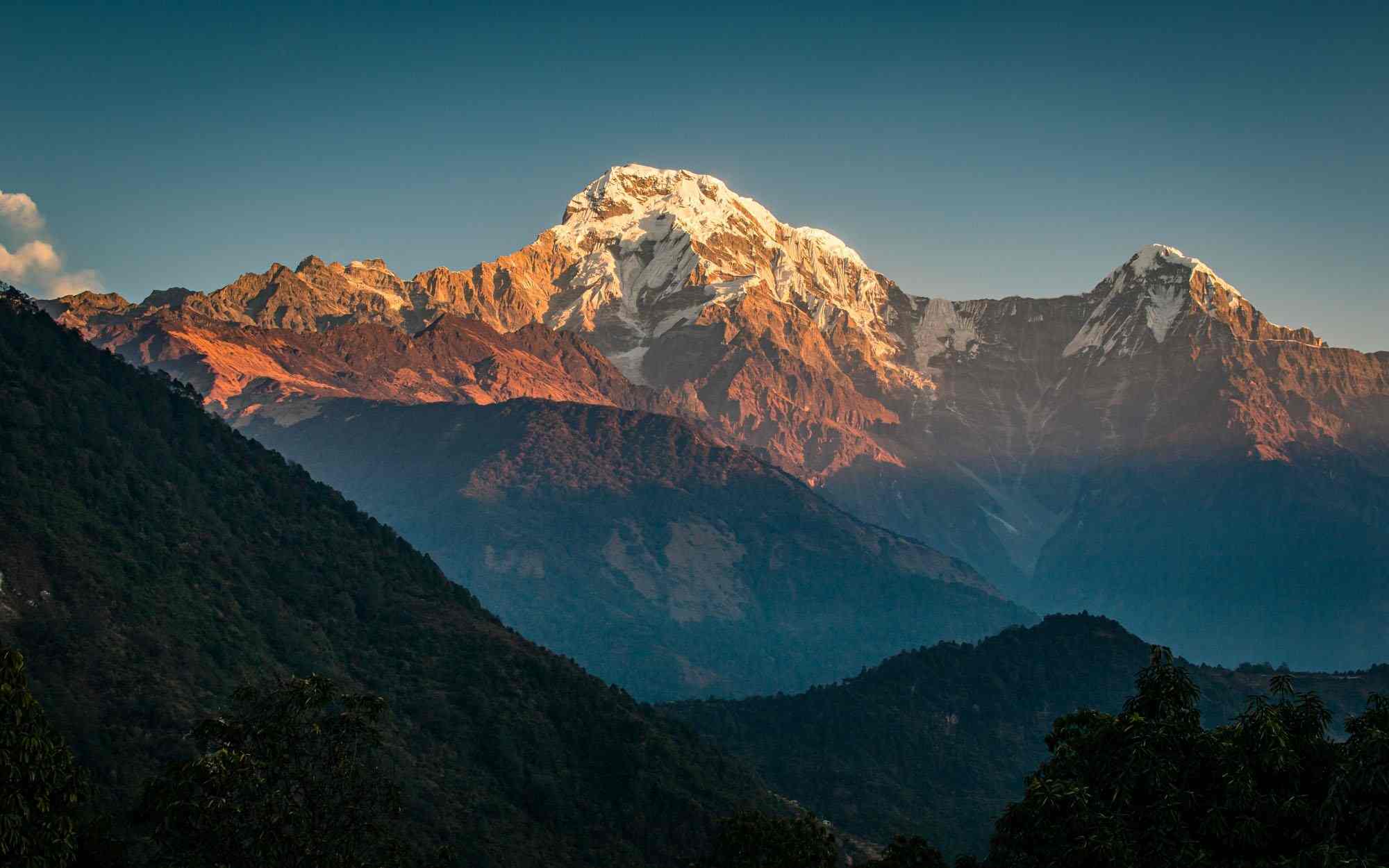
The Annapurna Circuit Trek is one of the most popular treks in Nepal that takes you through the diverse terrain of Nepal. Which includes lush subtropical forests, high altitude deserts and towering peaks of the Himalaya. It is one of the most famous treks in the world, known to be beautiful and culturally rich.
If you are planning to make this memorable trip in 2026, it is necessary to know how much it will cost you to make the Annapurna Circuit trek. Trekking permits, porter fees, daily expenses, transportation, and gear are the key things to consider when figuring out how much money you will need for the trek.
Be it a solo journey or a guided group, this breakdown will assist you in planning wiser and trek with confidence and make your travel journey easier and comfortable.
Overview of the Annapurna Circuit Trek
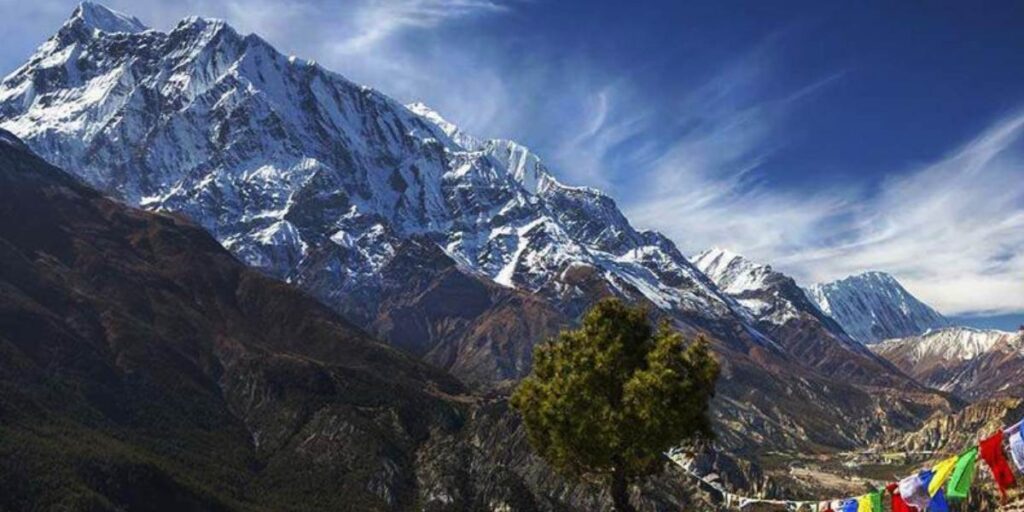
Before diving into the detailed cost of Annapurna Circuit trek, it's important to understand what the trek actually involves. The Annapurna Circuit is one of the most popular trekking trails in Nepal. It has stunning scenery, rich culture, and the excitement of crossing high mountain passes. It will take you to remote villages, dense forests, river valleys, and to some of the highest points that can be reached on foot.
Route, Duration & Distance
The Annapurna Circuit trek is around 160 to 230 km, depending on the route and side trips. It usually takes 14 to 20 days to finish. The trip starts from Besisahar or Bhulbhule and ends at Jomsom, Pokhara or Nayapul. The highest point is Thorong La Pass (5,416 m).
Knowing the route and time helps when planning the cost of Annapurna Circuit trek.
Highlights of the Trek
Annapurna Circuit is not all about the distance; it is about the memorable experiences that you will have during the journey. Whether it is a panoramic mountainous landscape, religious temples, or picturesque villages, the trail is different every day. These are just some of the highlights that make the trip a very special one and worth every step.
- Crossing Thorong La Pass (5,416 m)
- Relaxing in Tatopani’s natural hot springs
- Exploring apple orchards in Marpha
- Panoramic views of Annapurna, Dhaulagiri, and Machhapuchhre
- Visiting Muktinath Temple
These highlights not only add meaning to the adventure but also help you understand why many consider the cost of Annapurna Circuit trek worthwhile.
Trekking Permits and Entry Fees
To trek the Annapurna Circuit in 2026, you’ll need two official permits. These are checked at various checkpoints along the trail, so make sure to get them before starting your journey. The permit costs are affordable and a small part of the overall cost of Annapurna Circuit trek.
| Permit Type | Cost in NPR | Cost in USD | Cost in EUR |
| ACAP Permit (Annapurna Conservation Area Permit) | 3,000 | 25 | 25 |
These permits can be obtained in Kathmandu or Pokhara at the Nepal Tourism Board office. Store them in a safe place, as you will need to access them during the trek.
Where and How to Get Permits
You can get the ACAP Permit in either Kathmandu or Pokhara. Visit the Nepal Tourism Board office in these cities before starting your trek.
What you will need:
- A photocopy of your passport
- 2 passport-sized photos
- Permit fees in Nepali rupees (NPR), cash is preferred
The process is simple and normally takes 15 to 30 minutes when all the requirements are ready. Make sure to always carry your permit with you during trek; you will be checked at various points along the trail.
Guide and Porter Costs
Hiring a guide or porter during the Annapurna Circuit trek is a smart choice, particularly when you are a first-time trekker in Nepal. Guide helps you with navigation, the local language, cultural knowledge, and safety. A porter will be carrying your heavy backpack so that you can enjoy the trek without physical stress. This assistance makes the trip safer, more pleasant and less stressful.
Below is the average cost per day:
| Service | Daily Rate (NPR) | USD (approx) | EUR (approx) |
| Guide | 3,000 to4,000 | 23 to 30 | 21 to 28 |
| Porter | 2,000 to 3,000 | 15 to 23 | 14 to 21 |
Note: Some trekking agencies offer a combined “guide-porter”, one person who does both jobs, which can be more affordable.
Why Hire a Guide or Porter?
Hiring a guide or porter on the Annapurna Circuit trek is highly recommended, especially if you're new to high-altitude trekking or unfamiliar with the region. While it adds to the overall cost of Annapurna Circuit trek, the benefits often outweigh the expense.
A guide assists in the navigation of routes, makes you safe, gives you information about the culture of the place, and helps with permits, food, and lodging. With a porter carrying your heavy backpack, you can walk more comfortably and avoid getting too tired which is especially helpful at higher altitudes.
In general, a guide or porter will make the trip safer, more fun and more significant. It is also a very good way to contribute to the local economy and make the best of your trekking experience.
Equipment & Gear Costs
Proper clothes and equipment are needed to keep warm, dry, and safe when trekking the Annapurna Circuit. Items like sleeping bags, jackets, and hiking boots can make a huge difference in your overall comfort on the trail. Depending on your budget and how often you trek, you can either rent or purchase the gear you need. In the following section, we’ll break down how gear choices can impact the overall cost of Annapurna Circuit trek.
Renting Gear
Renting is the best choice when you are new to trekking or do not want to spend lots of money on the equipment. High-quality gear can be rented easily in Kathmandu or Pokhara at a small daily price.
Common items to rent include:
- Down jackets
- Sleeping bags
- Trekking poles
- Backpacks
- Crampons (if trekking in winter)
The average rental costs are between NPR 100 and 300 (approximately 1 to 3 USD) per piece per day. Renting enables one to reduce the expenses of the Annapurna Circuit trek without compromising on safety and comfort.
Buying Gear
If you plan to trek more often or want your equipment, buying might be a better choice. Kathmandu and Pokhara have many shops offering both local and international brands.
Essential gear to buy includes:
- Trekking boots (well-fitted and waterproof)
- Base layers and thermals
- Gloves, hats, and sunglasses
- Water bottles and purification tablets
Buying would be more suitable in case you intend to trek more frequently or you want to have your own equipment. Kathmandu and Pokhara are full of shops that sell both local and international brands.
Transportation Costs
Transport is a significant element in the planning of your trek. You will have to go to Kathmandu or Pokhara and then to the starting point of the Annapurna Circuit, which is usually Besisahar or Bhulbhule. The cost and time depend on the type of transport you choose, and this can affect the total cost of Annapurna Circuit trek. The following are the common modes of getting there.
Getting to the Starting Point
Options to reach Besisahar or Bhulbhule:
| Mode of Transport | Price (NPR) | USD | EUR |
| Local Bus | 700–1,000 | 5–8 | 4–7 |
| Tourist Bus/Jeep | 2,000–3,500 | 15–27 | 14–25 |
Return Route
From Jomsom to Pokhara, options include:
- Flight: NPR 10,000 to 12,000 (~$75 to 90)
- Jeep: NPR 2,000 to 3,500 (~$15 to 27)
Travel Insurance and Extra Expenses
Most trekkers start the Annapurna Circuit by road journey to Besisahar or Bhulbhule, the principal access towns to the trail, either by road journey to Kathmandu or Pokhara. Depending on your budget and preference, you can either take the local buses or the more comfortable tourist jeeps. This is one of the first costs to consider when calculating the total cost of Annapurna Circuit trek.
Travel Insurance
It's highly recommended to get insurance that covers:
- High-altitude trekking (above 5,000m)
- Emergency evacuation
- Medical expenses
Typical Cost: USD 80 to 150, depending on provider and duration.
Other Costs
- Snacks and drinks: NPR 500 to 1,000/day
- Wi-Fi or charging: NPR 200 to 500/day
- Hot shower: NPR 200 to 400
- Tips: 10% to 15% of the porter/guide's salary
Total Cost of Annapurna Circuit Trek in 2026
The best way to have a pleasant experience on the Annapurna Circuit without any surprises is to plan your budget. The overall expenses will be based on numerous elements such as permits, guides, gear, and daily costs. The following is an approximate estimate of what a typical 15-day trek will cost in Nepali Rupees, US Dollars, and Euros to enable you to plan better.
| Expense Category | NPR | USD | EUR |
| Permits | 5,000 | 38 | 35 |
| Guide + Porter (15 days) | 75,000 | 570 | 525 |
| Gear Rental | 3,000 | 23 | 21 |
| Transportation | 7,000 | 53 | 48 |
| Accommodation & Food | 30,000 | 228 | 210 |
| Insurance | 18,000 | 137 | 125 |
| Misc. Expenses | 7,000 | 53 | 48 |
| Total | 145,000 | 1,100 | 1,012 |
Average daily cost: Around NPR 9,500 / USD 70 / EUR 65
Best Time to Visit Annapurna Circuit
Choosing the right season is very important for a safe and enjoyable trekking experience. The Himalayan weather can change quickly, and understanding when you should go to the Annapurna Circuit can prevent you from getting caught in the rain, snow or closed paths. The following is a brief summary of what each season has to offer:
| Season | Months | Highlights |
|---|---|---|
| Spring | March to May | Warm days, blooming rhododendrons, clear skies |
| Autumn | September to November | Best weather, clear mountain views, stable conditions |
| Winter | December to February | Cold temperatures, snow at high passes, and some parts may close |
| Monsoon | June to August | Heavy rain, cloudy skies, and possible landslides |
Spring and autumn are the prime times and considered the best time to visit Annapurna Circuit, as the weather and visibility are good.
Cost-Saving Tips for Annapurna Circuit Trek
You do not need to spend a lot of money on trekking the Annapurna Circuit. In a couple of clever decisions, you may have the adventure without going overboard. From timing your trip right to packing wisely, these simple tips can help lower the overall cost of Annapurna Circuit trek while still making sure you have a great experience.
To keep your cost of Annapurna Circuit trek low, it helps to plan carefully and make smart choices along the way. These simple tricks will allow you to save money without losing the fun and amazing experience.
- Visit during the shoulder season (March or late November) to get cheaper room rates and transport.
- Participate in group treks to cut down on the cost of guides and porters
- Carry a refillable water bottle and water purification tablets to avoid spending money on bottled water
- Do not overpack rental equipment locally in Kathmandu or Pokhara; rather than purchasing all of it
- Bring sufficient cash, because ATMs are few or not dependable on the trail
These small changes can help you save money while still enjoying every part of the trek.
Why Choose Adventure Glacier Treks?
The Annapurna Circuit trek planning has numerous significant points, such as the knowledge of the total expenses and permits, as well as transportation and equipment. This guide has covered everything you need to know about the cost of Annapurna Circuit trek in 2025, helping you budget wisely and prepare for a safe, unforgettable journey through one of the world’s most beautiful trekking routes.
Adventure Glacier Treks is the perfect company to take when you want to make your trek easy and fun. We ensure your safety and comfort with very experienced local guides, no hidden costs, tailor-made itineraries to suit your pace, and availability of 24/7 support in case of emergencies.
With hundreds of 5-star reviews, Adventure Glacier Treks gives you the confidence and care you need for a truly memorable trekking experience. We’re proud to be recognized as the best tour and travel agency in Nepal and if you're planning more adventures, check out our past blogs for travel tips, guides, and inspiration!
FAQs About Annapurna Circuit Trek Cost
1. Can I trek without a guide or porter?
Yes, you may trek alone, but only when you are experienced. However, the trek is safer and easier when one hires a guide or porter, particularly when it comes to navigation and heavy luggage.
2. Are there ATMs on the trail?
ATMs are few and far between on the route, with most being in larger villages, such as Manang. Before getting into the trek, it is advisable to carry some cash.
3. How much should I tip my porter or guide?
An appropriate tip will be 10 to 15% of their total charge. You are able to tip more when you feel that they did a great job.
4. What’s the cheapest way to complete the trek?
The cheapest way is to trek solo, avoid flights, stay in budget tea houses, and bring your own snacks to save money. Planning your trip carefully and choosing local transport can also help keep costs low.
